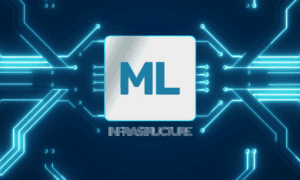The world of online shopping is changing fast as digital marketplaces take the role and transform the way businesses interact with customers. From players, like Amazon and eBay to specialized platforms serving particular industries or interests! Whether you’re looking to kickstart a marketplace venture or improve an existing one’s offerings and reach out to customers better. Knowing about marketplace development services is key to building a platform that grows and stands out among competition.
Let’s delve into the elements of creating a marketplace; business strategies and features that matter for sustainable growth and success, over time will be discussed here. Additionally, we’ll touch on the significance of building a user ecommerce platform and share insights on crafting an ecommerce marketplace website that resonates with users needs and desires.
Exploring the Concept of the Marketplace Model
It’s important to clarify the kind of marketplace you aim to create before starting development work. There are typically three types of marketplaces to consider:
- B2C (Business-to-Consumer) – Platforms like Amazon and Walmart Marketplace connect businesses with consumers.
- B2B (Business-to-Business) – Marketplaces like Alibaba and ThomasNet facilitate transactions between businesses.
- C2C (Consumer-to-Consumer) – Platforms like eBay and Poshmark allow individuals to buy and sell products directly.
Every model faces its hurdles such, as handling payments efficiently and navigating regulatory requirements and logistics successfully; the choice of strategy should align with your business objectives and the preferences of your customer base.
Key Elements for Building a Marketplace
Creating a thriving e commerce platform entails planning and flawless execution of the project tasks with a focus placed upon the following key attributes:
Ensure to use navigation features
Your online store needs to provide a smooth shopping experience where customers can easily find what they need with search options and personalized suggestions to make their shopping journey more enjoyable and convenient.
Managing vendors
An efficient vendor dashboard supports sellers in overseeing their products for sale, on the platform while keeping track of orders and evaluating their performance effectively. This tool also offers insights into sales patterns and customer preferences that can motivate vendors to enhance their product offerings further.
Providing payment choices
Providing payment choices such as credit/debit cards, PayPal, digital wallets and BNPL enhances the shopping experience for customers. Incorporating security measures against fraud is essential to safeguard against transactions.
Building a scalable system
Building a system that can grow along with your needs is crucial, for long term success, in the realm. As your platform expands in size and scope, over time the user base and transaction volume will also increase. Selecting a framework like cloud based hosting and a microservices architecture can help maintain optimal performance even when there is a surge, in website traffic.
Mobile responsiveness
The increasing popularity of shopping on devices means that having a website that adapts to screen sizes or a specialized mobile application is essential for businesses to succeed in the digital marketplace today.
The Impact of Technology, on the Growth of Markets
When creating an online marketplace website, for ecommerce purposes selecting the technology stack is crucial. An organized platform guarantees loading speeds, top notch security measures and smooth user engagements.
Front end Web Development
Popular frontend frameworks include ReactJS, Angular and Vue.js. Mobile applications can be developed using platforms, like Flutter and React Native for platform compatibility. For native app development targeting operating systems like iOS and Android developers commonly use languages such as Swift for iOS and Kotlin for Android.
Backend & Database
I am well versed in Node.js, as Python and Ruby on Rails programming languages. Database options include PostgreSQL and MySQL in addition to MongoDB.
Hosting
I recommend using services, like AWS (Amazon Web Services) Google Cloud Platform (GCP) or Microsoft Azure, for scalable hosting solutions.
Utilizing AI driven suggestions and chatbots, for assisting customers along with technology, for transactions can boost the marketplaces effectiveness even more.
The obstacles encountered in the advancement of online shopping platforms
Ensuring a match, between the availability of goods and the consumers needs
In order for a marketplace to thrive successfully and engage users effectively over time; it must cater to the needs of both buyers and sellers.
Ensuring security
In the realm of transactions trust plays a role. One can enhance credibility by incorporating user feedback reliable payment portals and effective fraud detection mechanisms.
Countries worldwide have rules when it comes to data privacy protection laws and tax policies in transactions, like GDPR and CCPA compliance are essential to steer clear of legal issues.
Tips, for Creating a Marketplace Ready, for the Future
To stay ahead in the market it’s crucial to adopt a mindset when developing a marketplace, for competitiveness and success over time.
Let’s prioritize the user experience
Creating an user experience (UX ) is crucial, for the success of a marketplace dedicated to e commerce activities. A crafted platform entices users to browse around interact with the content and finalize their purchases.
Here are some important factors to keep an eye on:
- Clear and straightforward navigation enhances user engagement, by providing access, to products and categories with filters.
- By tailoring recommendations to preferences using AI can increase conversion rates by leveraging user behavior data.
- Streamlined Payment Process. Offering customers the choice, between a step, by step checkout or a guest checkout could help instances of abandoned shopping carts.
- Ensure mobile optimization. Make sure the marketplace is optimized for devices or consider developing an application to improve user accessibility.
- SEO and performance optimization. Ensure that your content is optimized for both search engine optimization (SEO) and performance to enhance visibility and user experience on your website.
Choosing the revenue model
Choosing the revenue model is essential, for long term viability in business operations with used methods, for generating income being:
- Commission-based model – Platforms like Amazon and Etsy charge a percentage for each transaction.
- Subscription model – Sellers pay a fee to access premium features (e.g., LinkedIn Marketplace).
- Advertising model – Sellers pay to have their listings sponsored or their products featured in advertising and promotions.
Combining models can optimize revenue streams. Maintain vendor involvement at the same time.
Ensure trust and security
For a marketplace to thrive it must earn the trust of its users by incorporating security measures and trust-building features to instill confidence, in the platform. Key actions to achieve this include:
- User Authentication. Implementing identity verification, for both sellers and buyers is crucial, in mitigating activities.
- Secure Payments. Ensure that your payments are processed securely by utilizing payment gateways that comply with PCI standards and employ encryption for all transactions.
- Transparency and reviews. Encouraging buyers and sellers to share their reviews can help foster transparency and trustworthiness in transactions.
- Dispute Resolution. Establish a system, for resolving disputes between buyers and sellers outlining a policy and process, for resolution.
Some Closing Remarks
Creating an internet marketplace necessitates a strategy that encompasses choosing the business model and adheres to the best practices of developing ecommerce applications effectively. A crafted platform featuring a compelling value proposition, along, with infrastructure and an intuitive user interface will position itself advantageously within the expanding digital market landscape.
When looking into marketplace development services, consider collaborating with a team of developers to turn your ideas into reality. Whether your goal is to create a marketplace application or improve the development of your ecommerce marketplace website, investing resources into the appropriate technology and functionalities will ensure that your platform is well prepared for what lies ahead.



































